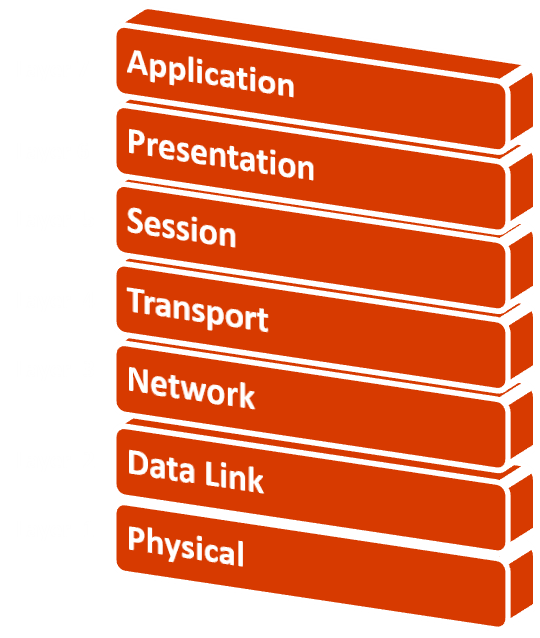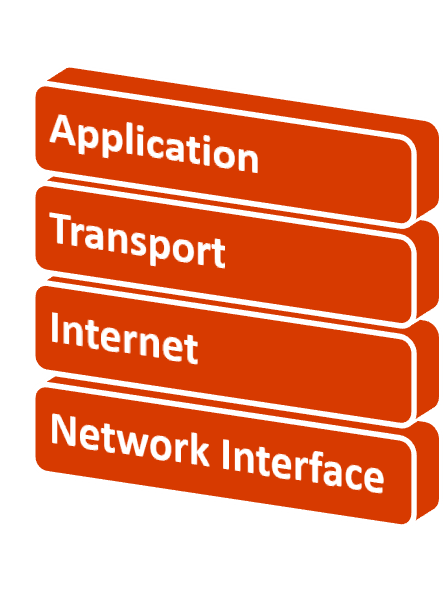Connectivity Models
Connectivity Models
- It would be useful to have a set of protocols and rules for data transmission for the variety of network types to ensure that the information can shared.
- For this reason, OSI and TCP/IP models were created.
- These models describe network system as being made up of a number of layers, each with its own set of protocols and functionality.
- OSI Model
- TCP/IP Model
OSI (Open System Interconnection ) Model
- The Open System Interconnection (OSI) model is the foundation of internet communications, including for devices connected to the IoT.
- The OSI model was developed to standardize the procedure for exchange of information between processing system.
- It is developed by ISO (International Standard Organization)

Physical Layer
- The physical layer is the bottom-most or the first layer of the OSI model.
- It contains the raw data which is further forwarded to the higher layers of the structure.
- The initiation, maintenance, and termination of the physical connection of a network also take place at this stage.
- Converting digital bits into an electrical, radio, or optical signal takes place at this stage only.
- It also Decides whether the connection is simplex, half-duplex or full-duplex.
- It also determines the way two or more devices can be connected physically.
- It represents the way how network devices are organised.
Data Link Layer
- Performs synchronization and error check for the data which is to be transmitted over the physical link.
- It breaks the input data into frames having sizes from a few hundred to a few thousand bytes which makes analysing the data easier.
- It further ensures the circulation of the frames to the different systems. For this, it attaches a header to the frame containing the address of the sender and the receiver.
- It controls the flow of data in the specified time duration and along with a set speed of transmission.
- The data is sent to the next layer in the form of packets which are further reviewed for additional processing.
Network Layer
- It is layer 3 that routes and forwards the packets or signals through various channels to the other end.
- Act as the network controller by deciding which route data must take i.e it decides the best route to move data from source to the destination based on the network conditions, the preference of service, and other factors.
- It breaks the outgoing messages into packets and assembles incoming packets into messages for higher levels.
- The protocols adopted to route the network traffic are known as Network layer protocols.
- It acts as a network controller.
Transport Layer
- It splits the data groups into smaller units so that they are managed more efficiently by the network layer.
- It handles the flow of data, segmentation and de-segmentation and error control.
- The Transport Layer ensures sending of data from one end to another end i.e the delivery of data packets is controlled by the transport layer.
- Fragmentation and reassembly of data packets happen at this stage.
- The protocol used by this layer is the “Transmission Control Protocol” and “User Datagram Protocol”.
- The Transport Layer is also called the Heart of the OSI model.
Session Layer
- Maintains the messages and synchronizes communications between two different applications.
- It regulates user identification, logging on and off, billing and session management.
- The connection between the computers connected in a network is handled by this layer.
- This layer can also terminate or end any session or transmission which is finished.
- It serves as a dialogue controller. It allows the systems to communicate in both half-duplex or full-duplex modes of communication.
Presentation Layer
- This layer makes sure that the information is delivered in such a form that the receiving system will understand and use it i.e The data is transformed into the syntax or semantics which an application can understand.
- Before moving on the data any further, the data is formatted at this stage.
- Functions including encryption, compression, compatible character code set, etc. are also performed at this layer of the OSI model.
- It works as a data translator for the network.
Application Layer
- It provides several facilities such as manipulation of information in different ways, distributing the final results, retransferring the files of information, etc.
- The functions such as log in or password checking are also performed by the application layer.
- Communication with the user or the user application takes place at this stage i.e an application layer works as a window for users and application processes to reach network service.
- It assists to retrieve global information and services by granting access to distributed database resources.
TCP/IP Model
- TCP/IP (Transmission Control Protocol/Internet protocol) is based on a client-server communication model by which a user (client) receives a service such as loaded a web page from server in the same network.
- TCP/IP is an industry-standard protocol suite for Wide Area Networks (WANs) developed in the 1970s and 1980s by the U.S. Department of Defence (DoD).
- Initially it is known as ARPAnet (Advanced Research Project Agency Network).

Network Interface Layer
- This layer acts as an interface between host and transmission links and used for transiting datagram.
- Protocol is used to connect to the host, so that the packets can be set over it.
- The Internetwork layer in the TCP/IP model handles software or logical, addressing
Internet Layer
- It manage the use of address for routing message packets over the network.
- For the IoT devices connectivity, IPv6 is the protocol most commonly used on this layer.
- It helps the packet to travel independently to the destination.
- The various function performs by the Internet Layer are delivering IP packets, performing routing, and avoiding congestion.
Transport Layer
- It provides end-to-end communications of the data between the source and destination host in the form of datagram and also monitors reliability, message order and prevents congestion across the network.
- The transport layer of TCP/IP protocol stack implements either the transmission Control Protocol (TCP) or the User Datagram Protocol (UDP).
- TCP provide reliable, connection-oriented communications between two hosts.
Application layer
- This layer perform the function of top three layers of the OSI model. That is application, presentation and Session Layer.
- It is responsible for node-to-node communication and controls user-interface specifications.
- Some of the protocols present in this layer are:
- HTTP (Hyper text transfer Protocol)
- HTTPS (Secured Hyper text transfer Protocol)
- FTP (File Transfer Protocol)
- Telnet (Virtual Terminal)
- SMTP (Simple Mail Transfer Protocol)
- DNS (Domain Name System)
